Rome at Night
Back to Italy 2016 Index
Colosseum
Rome - Around the City
Bus Tour
Vatican and St. Peter's
Our first night in Rome, we take a walk around the old center. The atmosphere at night
is much more intimate than during the day. The brightly lit fountains, monuments and
churches are even more beautiful .
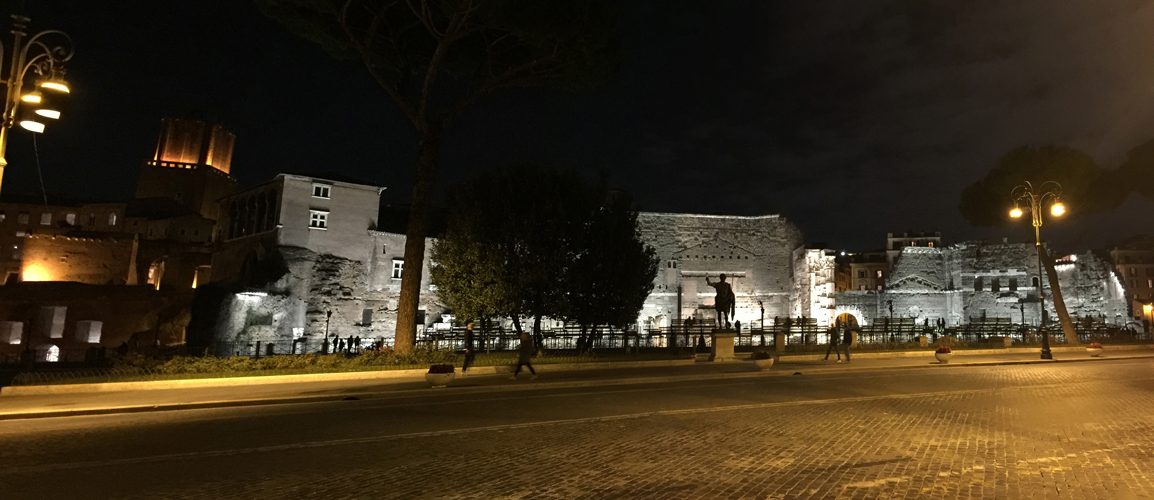 |
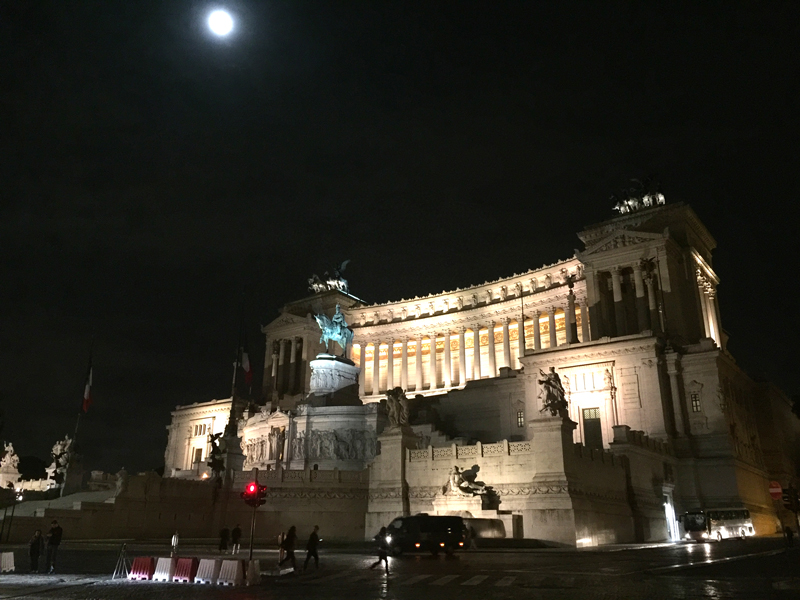 |
| Vittorio Emanuelle II monument celebrating the unification of Italy in 1866. |
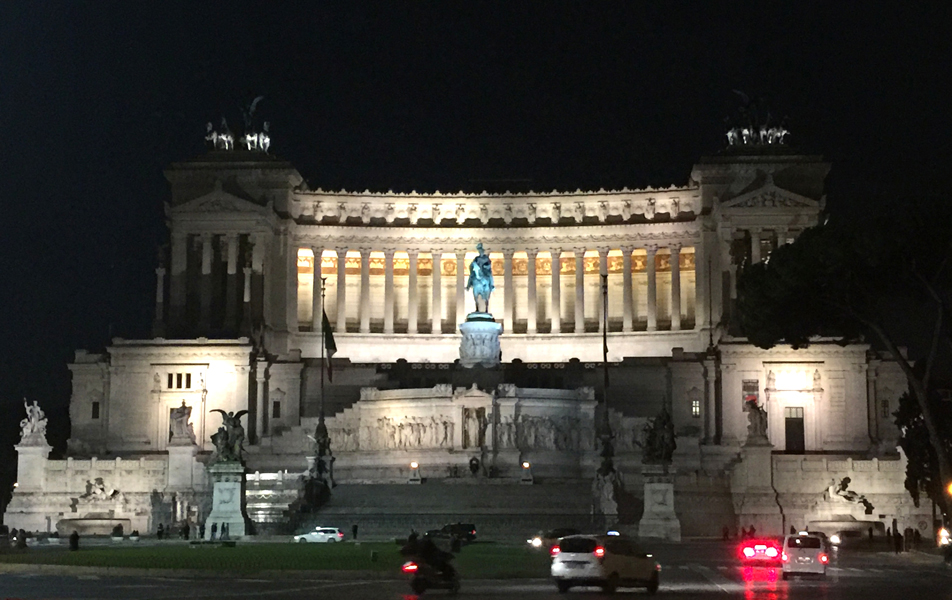 |
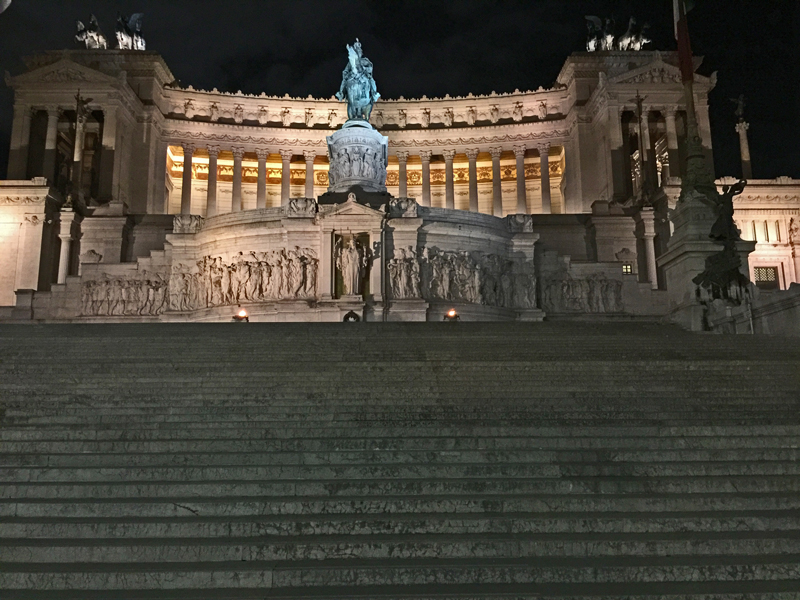 |
| The monument contains two 'eternal flames' at the tomb of the unknown soldier, and commemorating all of Italy's fallen. |
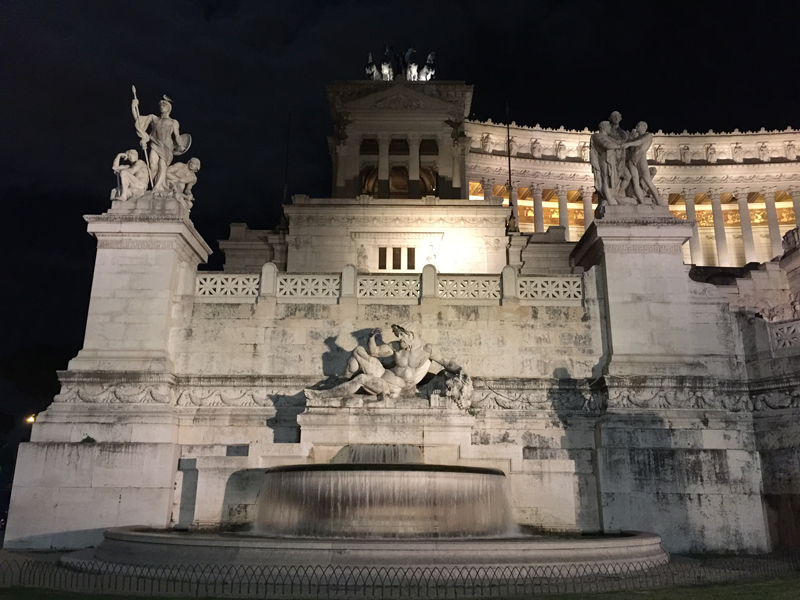 |
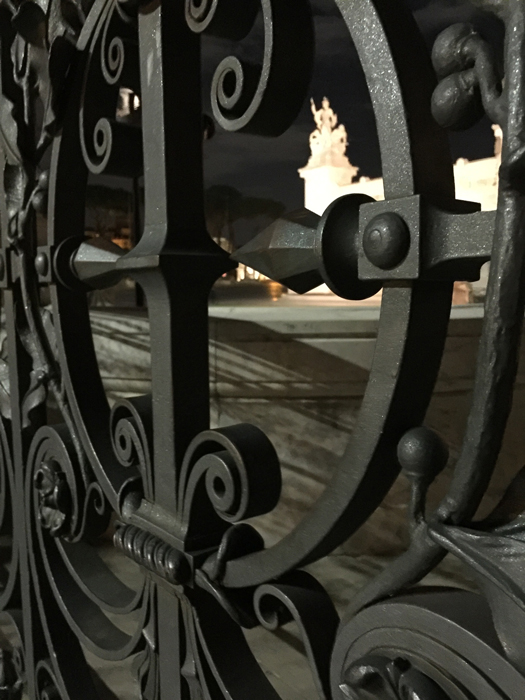 |
 |
| In
the Piazza di Colonna Trajana, the Column of Trajan is the most
prominent architectural feature. The Column was placed toward the
northernmost point of the original forum, acting as the focal point of
the entire forum complex. It was surrounded on three sides by two
flanking libraries and the Basilica Ulpia, but the buildings opposite
the basilica have been replaced. The first changes occurred in
1812 when Conservatorio di S. Eufemia and the adjoining Monastero dello
Spirito Santo were pulled down to excavate Trajan's Forum. In the late 19th century the appearance of the square
surrounding the column was entirely changed by the construction of
Monumento a Vittorio Emanuele II. Eventually in the 1930s some
remaining houses were demolished to open Via dei Fori Imperiali. |
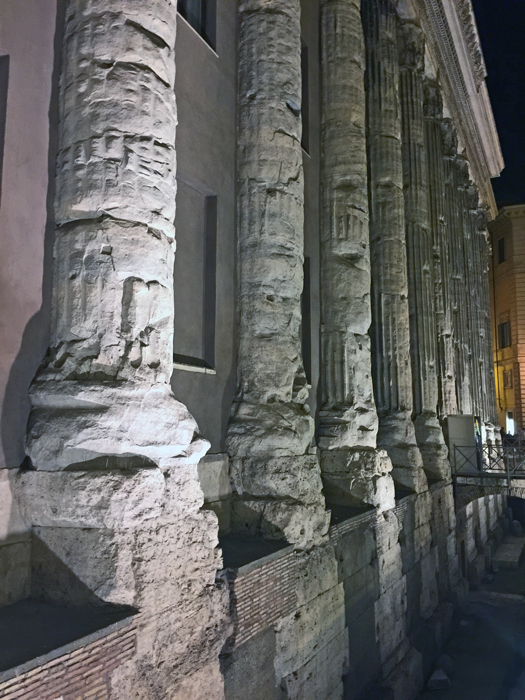 |
| The
Temple of Hadrian was built in 145 AD by Emperor Antoninus Pius,
successor of the deified Hadrian, to whom the temple was dedicated. The
temple was situated at the Campus Martius (Field of Mars). A mere
eleven columns have survived the times; all were part of the north side
of the temple. At the end of the seventeenth century pope
Innocent XII commissioned Italian architect Carlo Fontana with the
construction of a new papal customs office at the site of the Temple. Fontana, who worked with his son Francesco on the project,
integrated the remaining columns of the temple in the new building,
which was completed in 1700 after ten years of construction.
Today the building houses the Borsa Valori di Roma, Rome's stock
exchange. It is located at Piazza di Pietra, a small square not far
from the Via del Corso. |
 |
| Built
more than 1800 years ago, the magnificent Pantheon still stands as a
reminder of the great Roman Empire. The name Pantheon refers to the
building's original function as a temple for all the gods. The
portico's sixteen huge, sixty ton columns were quarried in Egypt, each
of a single piece. They were transported all the way to Rome using
barges and vessels. The Pantheon borders the Piazza della Rotonda. |
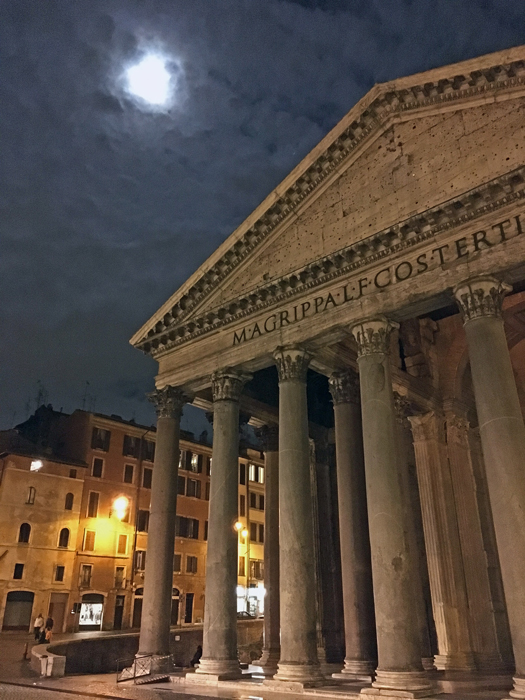 |
| Before the current Pantheon was built, two other buildings occupied the same site.
The first one, a traditional rectilinear, T-shaped structure was built
in 27-25 BC by general Marcus Agrippa, son-in-law of Emperor Augustus.
The temple was dedicated to the gods Mars and Venus. It burned down in
80 AD but was rebuilt by Emperor Domitian. In 110 AD the building was
struck by lightning and burned down again. In 118 AD Emperor
Hadrian ordered the Pantheon to be rebuilt again, but this time in a
totally different, circular design. It was completed seven years later,
in 125 AD. |
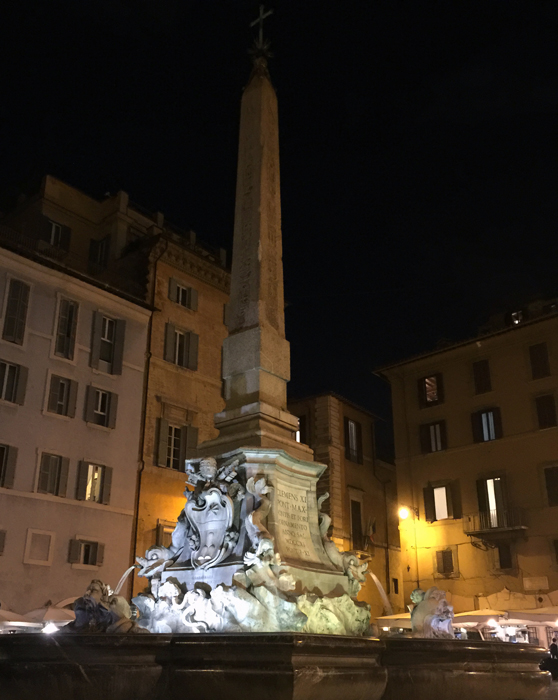 |
| In
the center of the Piazza della Rotunda is the Fontana del Pantheon,
surmounted by an Egyptian obelisk. The fountain was constructed by
Giacomo Della Porta under Pope Gregory XIII in 1575, and the obelisk
was added to it in 1711 under Pope Clement XI. |
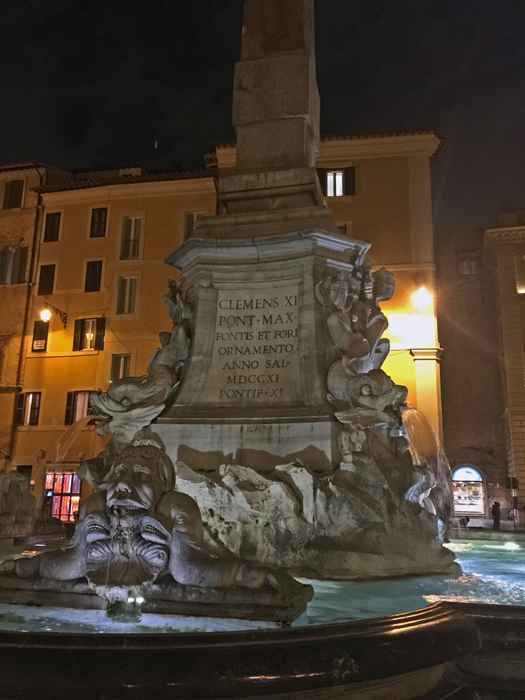 |
| The
obelisk, originally constructed by Pharaoh Ramses II for the Temple of
Ra in Heliopolis, had been brought to Rome in ancient times where it
was reused in the Iseum Campense, a shrine to the Egyptian god Isis
that stood to the southeast of the Pantheon. |
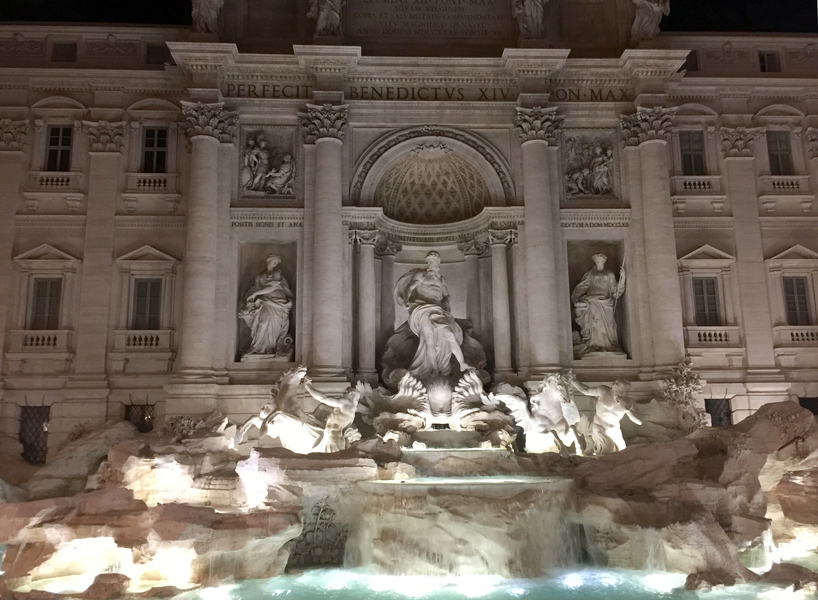 |
| Trevi
Fountain. The 'Taming of the Waters' is the theme of the gigantic
composition that tumbles forward, mixing water and rockwork, and
filling the
small square. Tritons guide Oceanus' shell chariot, taming winged
horses (hippocamps). In the niches flanking Oceanus, Abundance
spills water from her urn and Salubrity holds a cup from which a snake
drinks. Above, bas-reliefs illustrate the Roman origin of the aqueducts. |
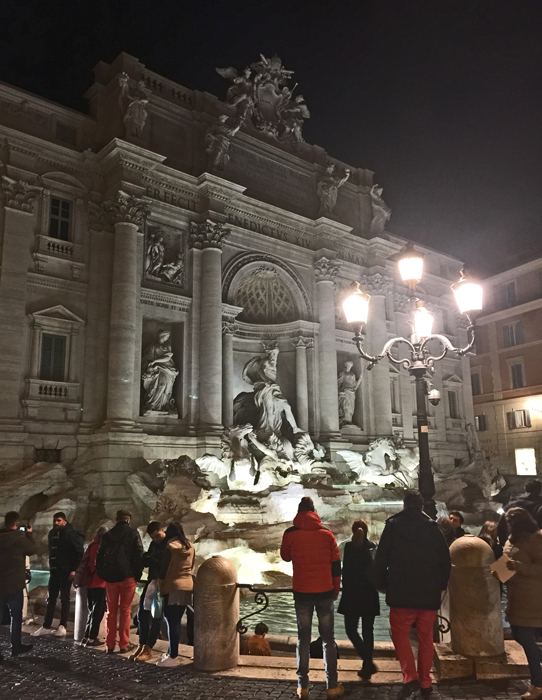 |
| Visitors gather around the fountain at night. |
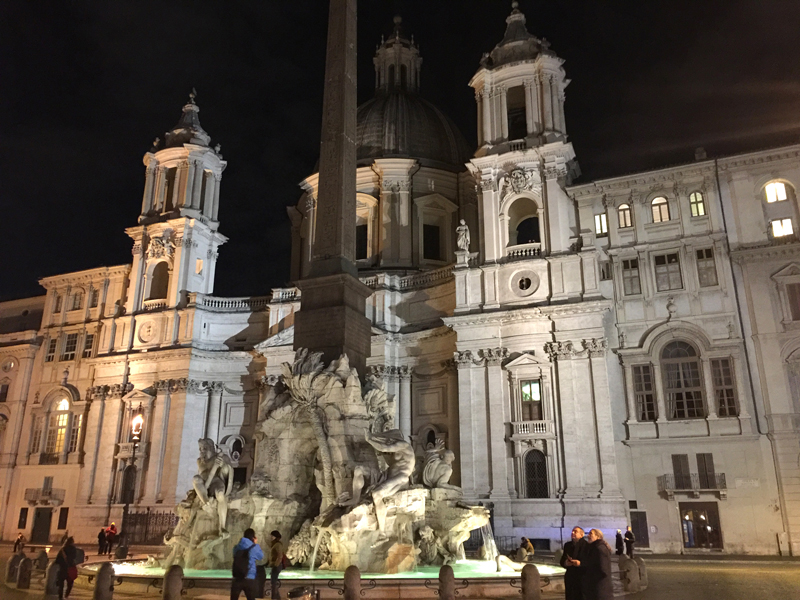 |
| In the center of Piazza Navona stands the famous Fontana dei Quattro Fiumi, or Fountain of the Four Rivers (1651) by Gian Lorenzo Bernini, topped by the Obelisk of Domitian, brought in pieces from the Circus of Maxentius. Behind the fountain, the church of Sant'Agnese in Agone by Francesco Borromini, Girolamo Rainaldi, Carlo Rainaldi and others. |
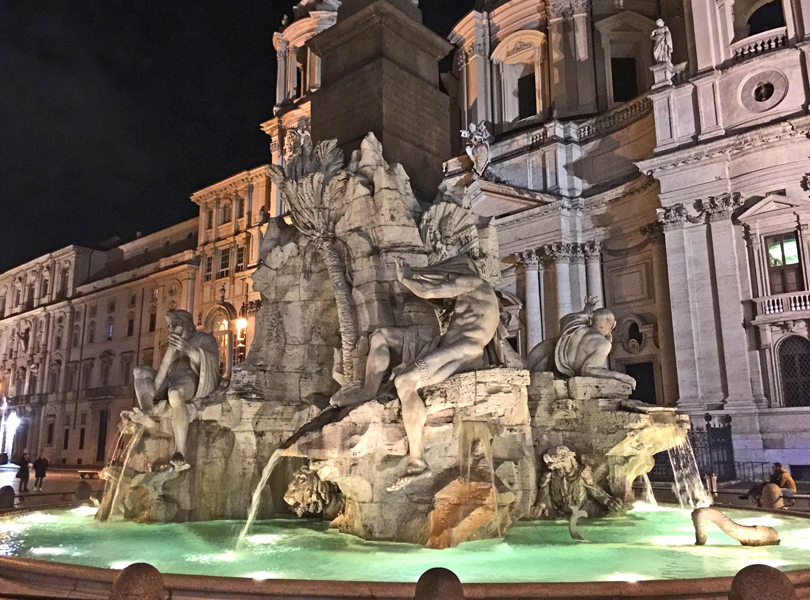 |
| The
four river gods represent papal authority throughout the
world. The Nile (Africa) and the Ganges (Asia) - left and center. The Danube (Europe),
and the Rio del la Plata (America) are on the other side of the fountain. |
 |
| At left, arm outstretched, River God Rio del la Plata. On the right, River God Danube. |
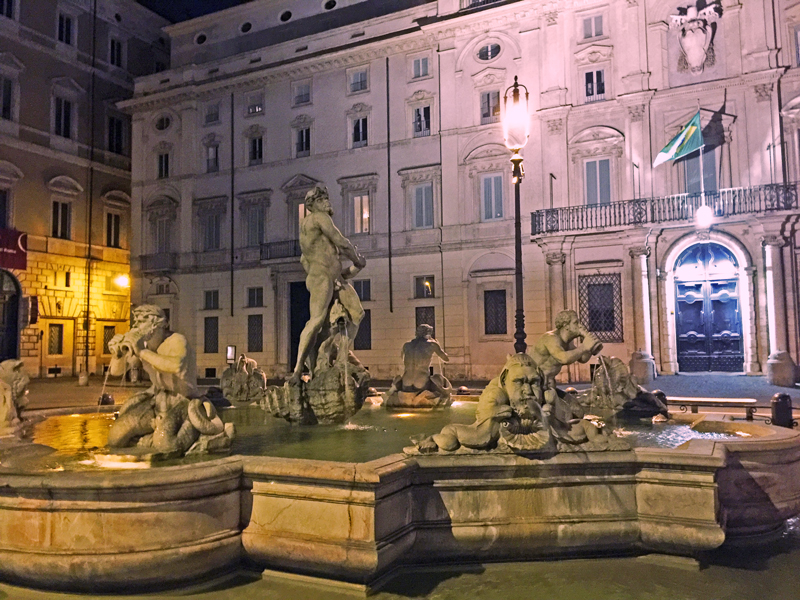 |
| The
Fontana del Moro or Fountain of the Moor, is located on the southern
end of Piazza Navona. The fountain was originally designed by
Giacomo della Porta in 1575 with a dolphin and four Tritons.
However, in 1653 the statue of the Moor was added by Gian Lorenzo
Bernini. During 1874 the original statues were moved to the
Galleria Borghese. |
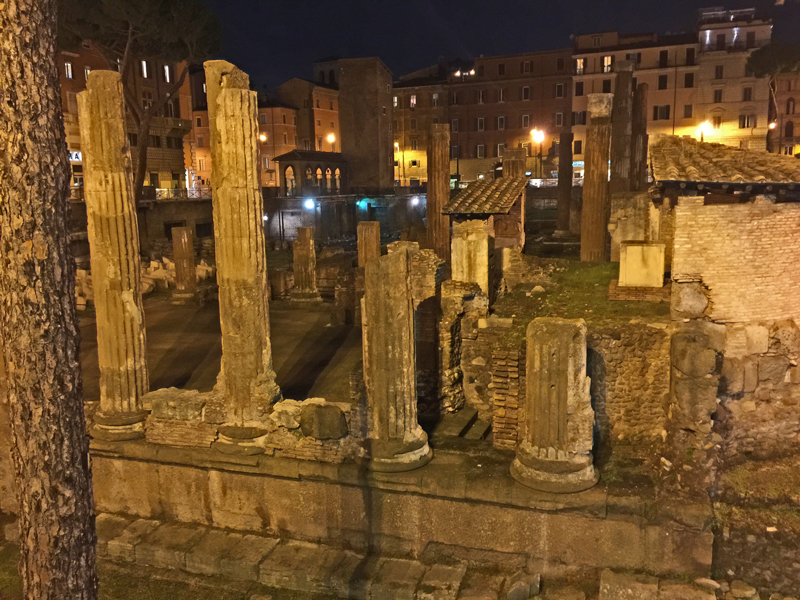 |
| Archealogical excavation/restoration happens all over Rome. |
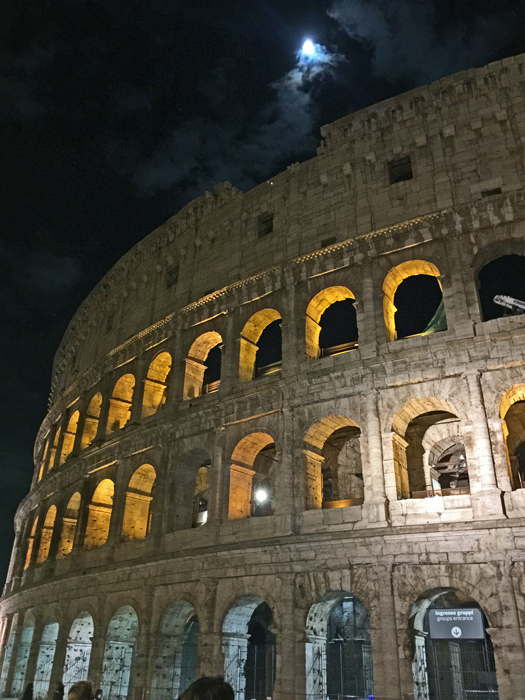 |
| The haunting moonlit Colosseum. |
Back to Italy 2016 Index
Colosseum
Rome - Around the City
Bus tour
Vatican and St. Peter's